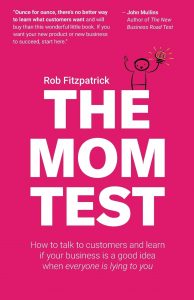It is widely known that a significant proportion of startups fail.
Also, research carried out by T. Eisenmann at Harvard Business Review (July 2021) shows that more than two-thirds of them never deliver a positive return to investors.
There is no exact reason, why a significant number of startups fail, however, research indicates a lack of understanding of customer needs, poor communication with customers and failure to respond to customer feedback are among the key reasons for startup failure.
Based on these facts, we can say that talking to customers is one of the most effective, cheap, and still highly underrated techniques to validate business ideas. It provides powerful insights that allow companies to empathise with customers by exploring the hidden needs and behaviours of users (Liedtka, 2013). We all know we should talk to customers and learning how to do it right would help startups avoid building products nobody would buy.
The present blog post aims to provide practical how-to tips to help marketers and startup founders ask good questions in user research to avoid bias and false-positive or false-negative in research.
The Mom Test
This blog post has reviewed the book named ‘The Mom Test’ by R. Fitzpatrick. Through the book, I learned how to frame better questions to verify if a business is a good idea, if users are lying to you and how ‘Pass the mom test’. The author gathered a wide range of practical examples suggesting tips on how to conduct unbiased customer conversations.

Ref: Fitzpatrick R., The Mom Test, (2013).
3 Good Questions to Ask
1. Talk me through
Research shows that conducting too formal user interviews won’t produce positive results. Everything becomes more natural if we feel more relaxed keeping the conversation more casual as explained by the UXDesign.
The ‘Talk me through’ question is a generic and unbiased question. However, it is one of the most effective questions we can ask. It aims to explore what is daily life and the process to accomplish the goal of our end-user. We get as close to the real action of their life by asking a simple question like:
- Talk me through the last time that happened.
- Talk me through your workflow.
- Tell me about the last time you submitted an internal ticket at work.
This question will help us to gain valuable insights, for example: what tools do they use? What teams do they engage with? What are their frustrations?
2. Does this problem matter
Due to research, 43% of startups fail because they are offering solutions customers are not willing to pay for. Also established brands have a quite high fail rate with their product development: 95% of all new products are not accepted by buyers. However, not all problems are worth being solved. Clearly, the problem must be relevant, solvable and marketable.
Let’s imagine we are having a conversation with an HR Manager to explore if she may be interested in using an HR tool to assess candidates. Below you find a list of questions we might ask her:
- How much time do you spend reviewing tasks and case studies?
- Which tool and services do you currently use?
- What are already doing to improve this?
- What are the 3 big things you’re trying to fix or improve right now?
3. What else have you tried
Asking the user ‘What else have you tried?‘ is a great follow-up question. This aims to understand what solution he is using right now. We figure out how much does worth to solve the problem for him. How often he identifies this problem? How big is the pain? Would this person be willing to pay to solve the problem?
If the user hasn’t looked for ways of solving it already, most luckily he will not go to look for our solution.
3 Bad Questions to Avoid
1. Would you buy a product with x features?
Asking the user if he would be happy to purchase a product would not be right. The answer would be based on opinions and hypothetical actions happening eventually in the future.
Contrary, the best thing to do is to explore how they’re currently dealing with the current solutions solving the specific problem. For example:
- Can you through what happened the last time X came up?
- How much does it cost (or time) to solve X?
- If you haven’t solved X, why not?
- Have you tried to search for solutions and found what you wanted?
2. Do you think this is a good idea?
One of the first things I learned as a Design Thinking Researcher is to take users’ design recommendations with a grain of salt. People know their problems better than their solutions. Asking for feedback regarding your new product features is not a good idea. Only the market can tell if an idea is a good idea and opinions are worthless.
3. How much would you pay for X?
When we ask how much a person is willing to pay for a new product or service we are getting hypothetical answers based on assumptions. It is better if we use this opportunity to ask better and more truthful questions to gather insights based on evidence about their past experience. Learn how big is the problem for them. How much is big their budget? What are their frustrations and alternative solutions? Take note as always and be friendly.
Conclusions
My life as a marketer would have been simpler if I had talked more often to users in my past experiences. I truly believe conducting user research is a critical factor in business. For this reason, I have become passionate about User Research. Learning how to talk to users can lead to a significant competitive advantage for any brands. This is a skill and critical factor that every marketer and startup founder should gain to achieve better results.
This can help build a new startup, generating revenue growth by maintaining a direct connection to users in the long term. Ignoring your customers can be harmful, especially for startups. The first steps of the Design Thinking process aim to discover problems and come up with creative solutions by thoroughly understanding their users’ goals, frustrations, and end-task. Talking to users is so critical that is also the core of the Y Combinator teaching school programme. Click here to watch the video of Y Combinator by E. Migocovsky.
Did you find this article helpful? Comment below with your opinions! 🙂



Leave a Reply